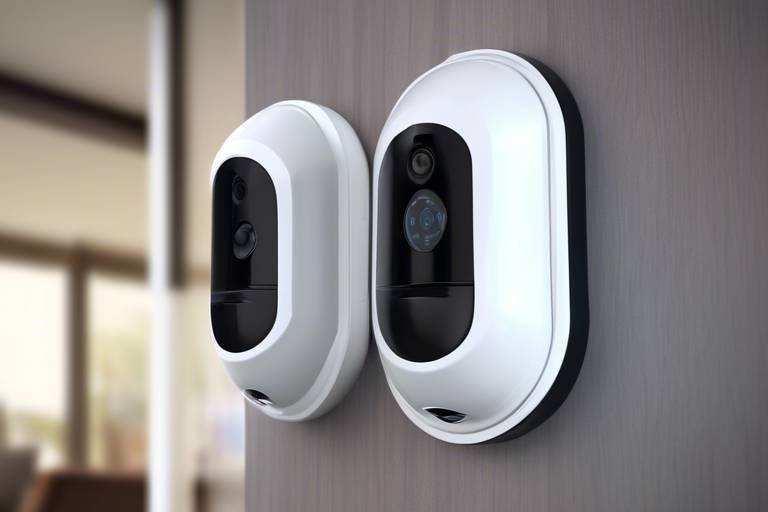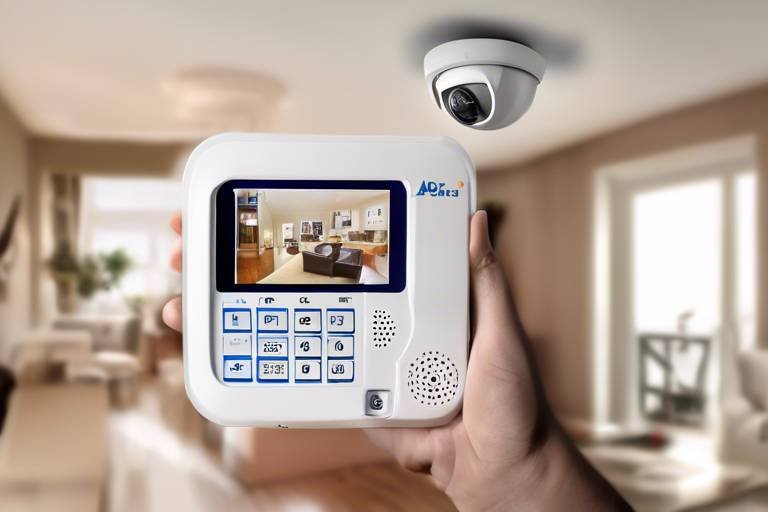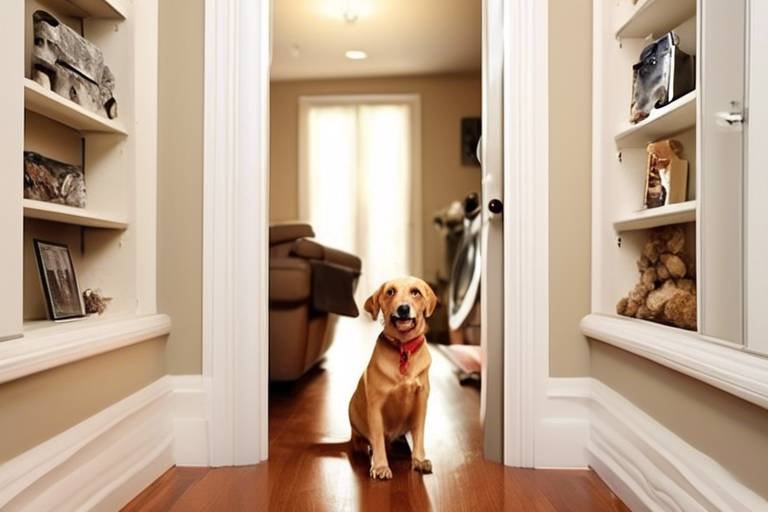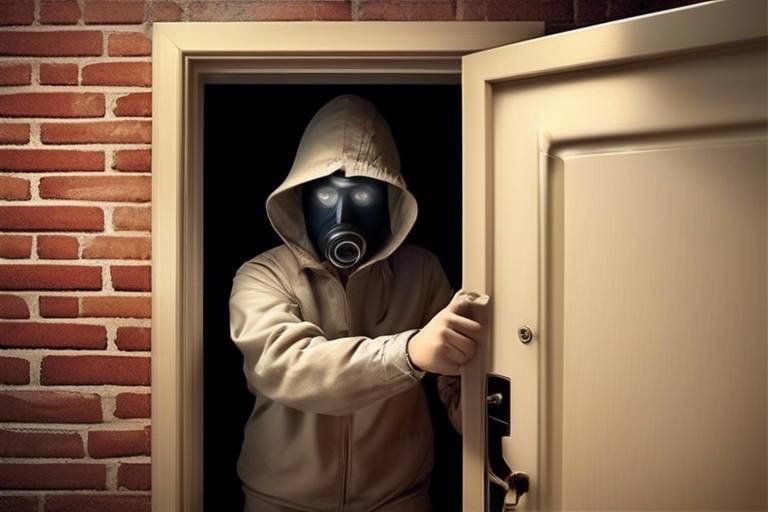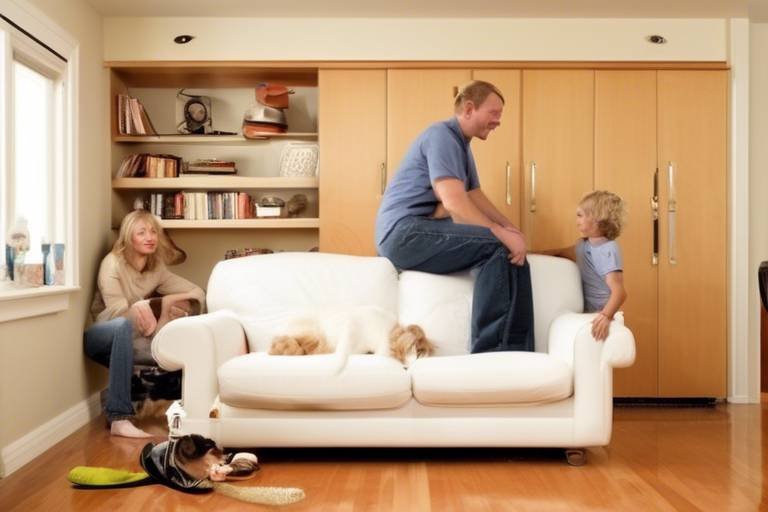Safety Tips for Decorating Your Child’s Room
Decorating your child's room is not just about aesthetics; it’s about creating a space that is both fun and safe. As parents, we want our little ones to explore, play, and grow without the constant worry of hazards lurking around every corner. In this guide, we will delve into essential safety tips that will help you make informed decisions when choosing materials, furniture, and designs for your child's sanctuary. So, let’s embark on this journey to transform your child's room into a haven of joy and security!
When it comes to decorating your child's room, the materials you choose play a pivotal role in their health and well-being. Opting for non-toxic and hypoallergenic materials can significantly minimize exposure to harmful substances. For instance, many paints contain volatile organic compounds (VOCs) which can be detrimental to your child's respiratory health. Instead, look for paints labeled as low-VOC or zero-VOC. Similarly, when selecting bedding, consider organic cotton or bamboo fabrics that are gentle on the skin and free from harmful chemicals. Decor items like rugs and curtains should also be scrutinized; choose those that are flame-resistant and free from choking hazards. By prioritizing safe materials, you not only protect your child but also create a peaceful environment.
Selecting the right furniture is crucial for ensuring your child's safety. Always prioritize stability and safety when making your choices. Look for furniture with rounded edges to prevent injuries from sharp corners. Additionally, sturdy construction is key; furniture should be able to withstand the wear and tear of daily use. Another important factor is the size of the furniture; it should be appropriate for your child's age and height, allowing them to use it comfortably without risk. For instance, a low bed frame can help prevent falls, while a sturdy chair can support their playful antics.
Heavy furniture and decor can pose significant risks if not properly secured. Imagine a dresser tipping over during a playful moment—terrifying, right? To prevent such accidents, it’s essential to anchor heavy items like dressers and bookshelves to the wall. This simple step can make a world of difference in keeping your child safe. Use furniture straps or brackets designed for this purpose, ensuring that they are installed securely. It's a small effort that can lead to substantial peace of mind.
Wall-mounted shelves and cabinets are fantastic options for saving space and enhancing safety. By keeping items out of reach, you not only reduce clutter but also minimize the risk of your child pulling things down on themselves. When installing these solutions, make sure to use appropriate wall anchors and screws to ensure they’re securely fastened. This way, you can create a stylish, organized room without compromising safety.
It’s vital to select furniture that fits your child's age and developmental stage. For toddlers, consider low-to-the-ground options that allow them to climb in and out safely. As they grow, furniture should adapt to their changing needs, providing comfort and support. For example, a desk that suits their height will encourage good posture during homework time. By being mindful of age-appropriate selections, you foster a safe and nurturing environment that supports your child's growth.
Soft furnishings can add a cozy touch to your child's room, but they can also present safety risks. When choosing rugs, curtains, and cushions, look for items that are flame-resistant and free from choking hazards. Additionally, consider the size and placement of soft furnishings—large rugs can become tripping hazards, while small cushions might pose a choking risk if they have removable parts. By choosing wisely, you can enhance comfort while ensuring safety.
Proper lighting is essential in a child's room, not just for visibility but for creating a soothing atmosphere. When selecting lighting fixtures, opt for energy-efficient bulbs that produce less heat, reducing the risk of burns or electrical hazards. Additionally, consider using fixtures that are high enough to be out of reach of little hands. This way, you can create a warm, inviting glow without compromising safety.
Night lights can be a comforting addition to your child's bedtime routine, but safety should always come first. Look for night lights that are cool to the touch, ensuring they won't cause burns if accidentally knocked over. Additionally, choose designs that are free from sharp edges. A gentle glow can help ease your child into sleep while keeping their environment safe.
Choosing safe window treatments is critical for child safety. Traditional blinds with cords can pose strangulation hazards, so consider options like cordless shades or curtains. These alternatives provide adequate light control and privacy while eliminating risks. Remember, safety doesn’t have to compromise style; there are plenty of chic options available that will keep your child safe while looking great.
A designated play area is essential for your child's development, offering them a space to explore their creativity. When designing this area, think about the layout and materials that promote safety. Soft flooring options like foam mats or carpets can provide cushioning, reducing the risk of slips and falls. Additionally, keep the play area organized with effective storage solutions, ensuring that toys are easily accessible but not left scattered around to trip over.
The right flooring can significantly enhance safety in your child's play area. Consider materials that provide cushioning, such as carpet tiles or rubber flooring, which can help absorb impact in case of falls. These options not only reduce the risk of injury but also create a cozy environment for playtime adventures.
Effective storage solutions are key to keeping toys organized and out of the way. Look for bins and shelves that are easily accessible for your child, allowing them to reach their belongings without risk. Consider using open shelving for books and toys, which encourages independence and makes clean-up a breeze. By promoting organization, you create a safer, more enjoyable space for your child to play and learn.
- What materials are safest for children's rooms? Look for non-toxic, hypoallergenic options such as organic cotton for bedding and low-VOC paints.
- How can I ensure furniture is safe for my child? Choose furniture with rounded edges, sturdy construction, and appropriate sizing for their age.
- What should I consider for lighting in a child's room? Opt for energy-efficient bulbs and fixtures that are out of reach to minimize hazards.
- How can I create a safe play area? Use soft flooring materials and effective storage solutions to keep the space organized and minimize risks.

Choosing Safe Materials
When it comes to decorating your child's room, the choice of materials is not just about aesthetics; it's about ensuring a safe and healthy environment. Think of it like crafting a cozy nest for your little one—every element needs to be just right. Non-toxic and hypoallergenic materials should be your top priority. Why? Because children are naturally curious and tend to explore their surroundings with their hands and mouths. By selecting safe materials, you can minimize their exposure to harmful substances that could affect their health.
Let's dive into some of the options available for various elements in your child's room. For paints, look for low-VOC (volatile organic compounds) or zero-VOC options. These types of paints release fewer harmful chemicals into the air, making them a safer choice for your child’s space. When it comes to bedding, consider organic cotton or bamboo fabrics. Not only are they soft and comfortable, but they also reduce the risk of allergies and skin irritations.
For decor items, it's essential to choose those that are free from harmful chemicals. This includes wall decals, rugs, and even toys that may be present in the room. Always check for labels that indicate the product is lead-free and made from safe materials. If you're unsure, a quick online search can often yield valuable information about the safety of specific brands and products.
Here’s a quick comparison table to help you understand the different materials you can choose:
| Material Type | Safe Options | Considerations |
|---|---|---|
| Paint | Low-VOC, Zero-VOC | Check for labels and certifications |
| Bedding | Organic Cotton, Bamboo | Look for hypoallergenic options |
| Rugs | Natural Fiber, Non-Toxic | Avoid synthetic materials that may emit harmful chemicals |
| Decor Items | Lead-Free, Non-Toxic | Research brands for safety certifications |
Remember, the goal is to create a space that not only looks good but is also safe for your child. By opting for materials that are both functional and safe, you can ensure that your child’s room becomes a haven for creativity and comfort. It’s all about making informed choices that prioritize your child's well-being while still allowing their personality to shine through in the decor.
- What are VOCs and why are they harmful? VOCs, or volatile organic compounds, are chemicals that can evaporate into the air and may cause health problems. Low-VOC or zero-VOC paints are safer for indoor use.
- How can I tell if a product is non-toxic? Look for certifications and labels that indicate the product is free from harmful chemicals, such as lead or phthalates.
- Are organic materials more expensive? While they can be pricier, investing in organic materials can save money in the long run by reducing health risks and potential allergies.

Furniture Selection
When it comes to decorating your child's room, is one of the most crucial aspects to consider. After all, this is where your little one will play, learn, and grow. You want to create a space that is not only beautiful but also safe and functional. So, what should you look for when choosing furniture for your child's room? Here are some essential features to keep in mind:
First and foremost, prioritize stability. Kids are naturally curious and energetic, which means they might climb, jump, or pull on furniture. Look for pieces with a wider base that can withstand their playful antics. A sturdy dresser or bookshelf is a must to ensure it won’t tip over if your child decides to use it as a climbing frame. Additionally, check for rounded edges on furniture to minimize the risk of injuries from sharp corners. You wouldn’t want a simple bump to turn into a trip to the ER!
Another important factor is the size of the furniture. It’s essential to choose items that are appropriate for your child’s age and height. For instance, a toddler might struggle to reach a high bed or a desk that’s too tall. Instead, opt for furniture that they can easily use, such as a low bed or a child-sized table and chairs. This not only promotes independence but also reduces the chance of accidents.
Additionally, consider the materials used in the furniture. Look for non-toxic finishes and paints that are safe for children. This is especially crucial for items they may come into contact with frequently, like cribs or play tables. Many manufacturers now offer eco-friendly options that are both safe and stylish. You can even find furniture made from sustainable materials, contributing to a healthier planet while keeping your child safe.
It's also wise to think about storage solutions. Children accumulate toys and books faster than you can say "playtime!" Look for furniture that incorporates storage, such as beds with drawers underneath or benches that double as toy boxes. This way, you can keep the room organized, reducing clutter and the associated risks of tripping or falling over toys scattered on the floor.
Lastly, ensure that any furniture you choose is easy to clean. Kids can be messy, and you’ll want to make sure that spills and stains can be wiped away without hassle. Fabrics that are stain-resistant or surfaces that can be easily wiped down will save you a lot of time and stress in the long run.
In summary, when selecting furniture for your child's room, keep stability, size, materials, storage, and ease of cleaning in mind. By doing so, you'll create a safe, functional, and inviting space where your child can thrive and express their creativity. Remember, a well-furnished room is not just about aesthetics; it’s about fostering a safe environment that promotes your child's well-being.
- What type of furniture is safest for toddlers? Look for low, sturdy furniture with rounded edges and non-toxic finishes.
- How can I ensure my child's furniture is stable? Choose furniture with a wide base and consider anchoring taller items to the wall.
- Are there eco-friendly options for children's furniture? Yes! Many brands offer furniture made from sustainable materials with non-toxic finishes.
- What should I do if my child’s furniture is too tall for them? Consider using step stools or opt for age-appropriate furniture that they can easily access.
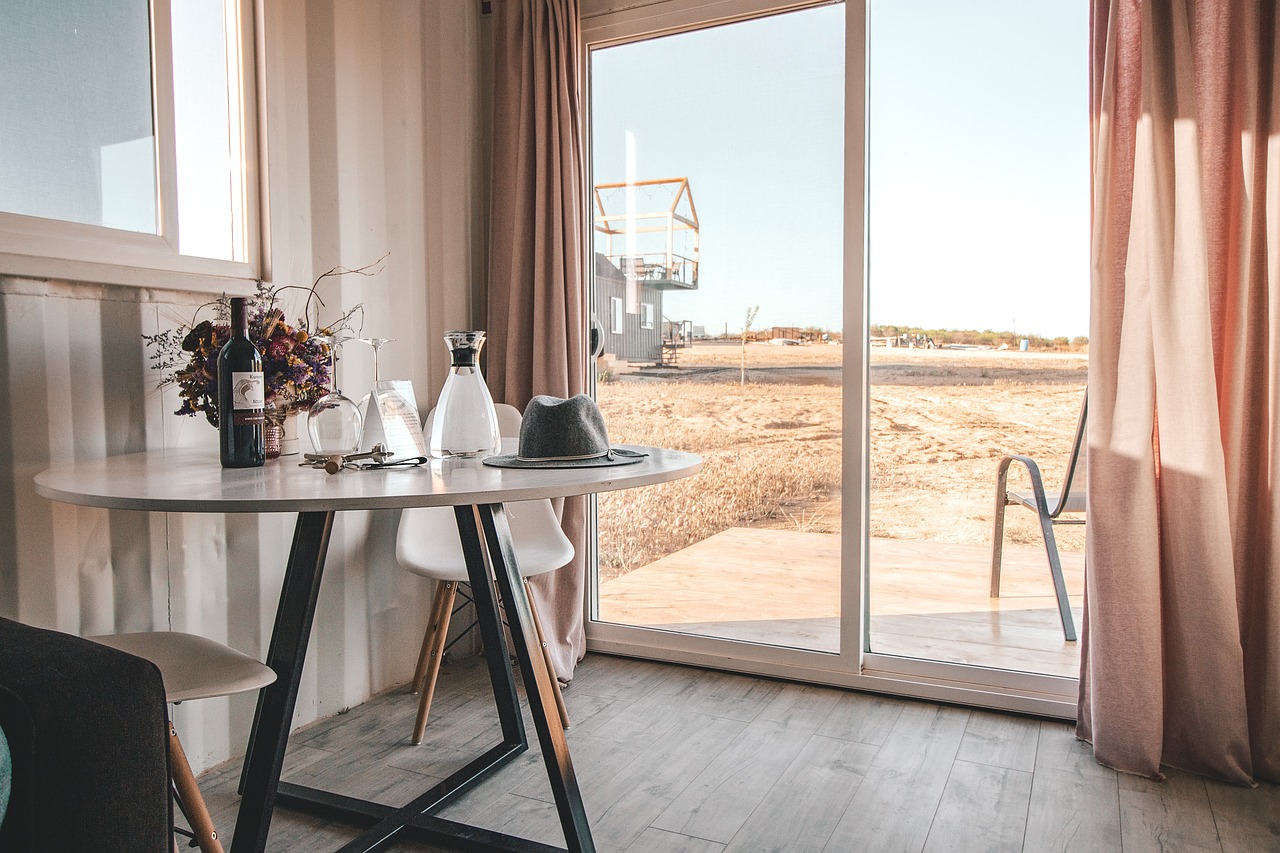
Securing Heavy Items
When it comes to decorating your child's room, safety should always be at the forefront of your mind. One of the significant risks that often goes unnoticed is the potential danger posed by heavy furniture and decor. Items like dressers, bookshelves, and large decorative pieces can become hazardous if they are not secured properly. Imagine a scenario where your curious little one decides to climb on a dresser to reach a toy; the consequences can be dire. Therefore, it’s crucial to take proactive measures to ensure that these heavy items remain stable and secure.
To effectively secure heavy items, consider the following methods:
- Anchor Straps: These are specially designed straps that attach to the wall and the furniture. They are an excellent way to prevent tipping, especially for tall pieces like bookshelves and dressers.
- Wall Brackets: For larger items, wall brackets can provide additional support. These brackets can hold the furniture in place and prevent it from moving or tipping over.
- Proper Placement: Position heavy items against walls and away from play areas. This reduces the likelihood of your child climbing on them, which can lead to accidents.
In addition to these methods, it's essential to regularly check the stability of your furniture. Over time, screws can loosen, and wear and tear can compromise the integrity of heavy items. A quick inspection every few months can help you identify any potential risks before they become a problem. Furthermore, teaching your child about the importance of not climbing on furniture can also play a vital role in preventing accidents.
Finally, don’t forget to secure smaller items that can also pose risks. For instance, heavy picture frames or decorative items placed on shelves should be secured or moved to higher locations. By taking these precautions, you can create a safe environment where your child can play and explore without the constant worry of heavy items toppling over.
Q: What types of furniture should I secure in my child's room?
A: It's essential to secure any tall or heavy furniture, such as dressers, bookshelves, and armoires. These items are more likely to tip over if your child climbs on them or pulls on them.
Q: How can I tell if my furniture is stable enough?
A: You can check stability by gently pushing on the furniture. If it wobbles or feels loose, it may need additional anchoring or support.
Q: Are there professional services that can help with securing furniture?
A: Yes, many home improvement stores offer installation services for furniture anchoring. Additionally, some child-proofing specialists can provide personalized assessments and solutions for your home.
Q: Can I secure furniture without damaging my walls?
A: Many anchoring systems are designed to minimize wall damage. Look for products that use adhesive or minimal drilling to secure furniture safely.

Wall-Mounted Solutions
When it comes to decorating your child's room, can be a game-changer. Not only do they save precious floor space, but they also enhance safety by keeping items out of reach. Imagine a room where toys, books, and decor are neatly organized and securely fastened to the walls, allowing your child to play freely without the risk of tipping furniture. This approach not only promotes a tidy environment but also instills a sense of responsibility in your little one.
To get started, consider installing wall-mounted shelves that can hold books, toys, and decorative items. These shelves should be anchored securely to the wall to prevent any accidents. Look for shelves that come with brackets designed for heavy-duty support, ensuring they can withstand the weight of your child's belongings. Additionally, consider using shelves with rounded edges to eliminate sharp corners, making them safer for little hands.
Another fantastic option is to incorporate wall-mounted cabinets. These cabinets can serve multiple purposes, such as storing clothes, toys, or art supplies. When choosing cabinets, opt for those with soft-close hinges to prevent little fingers from getting caught. Plus, having cabinets mounted high on the wall not only keeps hazardous items out of reach but also creates a visually appealing space that feels open and airy.
Don't forget about the importance of organization. You can enhance the functionality of your wall-mounted solutions by using decorative bins or baskets that can be attached to the shelves or cabinets. This will keep everything in its place and make cleaning up a breeze. Encourage your child to help organize their space, turning it into a fun activity that teaches them valuable skills.
Lastly, consider the aesthetic aspect of your wall-mounted solutions. Choose colors and designs that reflect your child's personality and interests. Whether it's a whimsical theme with bright colors or a more subdued palette with elegant finishes, make sure that the wall-mounted items complement the overall decor of the room. This not only creates a cohesive look but also makes the space feel personalized and inviting.
- What types of wall-mounted solutions are best for a child's room?
Look for wall-mounted shelves, cabinets, and hooks that are sturdy and safe. Avoid sharp edges and ensure they are securely fastened to the wall. - How can I ensure the safety of wall-mounted items?
Always anchor shelves and cabinets to the wall using appropriate hardware. Regularly check for loose screws or instability. - Can I use wall-mounted solutions in a small room?
Absolutely! Wall-mounted solutions are perfect for small spaces as they free up floor area and create a more open feel.

Choosing Age-Appropriate Furniture
When it comes to decorating your child's room, one of the most critical aspects is . This isn't just about aesthetics; it's about ensuring that the furniture fits your child's developmental needs and promotes safety. Imagine a toddler trying to climb onto a tall chair designed for adults—yikes! That’s a recipe for disaster. Instead, you want to create a space where they can thrive, express themselves, and feel secure.
First and foremost, consider the size of the furniture. For younger children, furniture should be lower to the ground, allowing them easy access and minimizing the risk of falls. Think about a small table and chairs that are just the right height for little ones to sit comfortably while drawing or playing. On the other hand, as your child grows, they will require larger pieces that can accommodate their changing needs. A desk that’s too small might hinder their ability to do homework comfortably, while a bed that’s too big could make them feel lost in their own space.
Another important factor is stability. Children are naturally curious and energetic, which means they may climb, jump, or swing on their furniture. Look for pieces that are sturdy and well-constructed, with a solid base to prevent tipping. For instance, a wide, low bookshelf is much safer than a tall, narrow one. You can also check for features like rounded edges to prevent accidental bumps and bruises. Safety should always come first, and the right furniture can help mitigate risks.
When selecting beds, consider options that grow with your child. A convertible crib that transforms into a toddler bed is a fantastic investment. It not only saves money but also provides familiarity as your child transitions into a new sleeping arrangement. Similarly, a loft bed can be a fun way to free up space for a desk or play area underneath as they get older.
Additionally, think about the material of the furniture. Opt for non-toxic finishes and materials that are free from harmful chemicals. This is especially important for children who are still exploring the world with their mouths. You wouldn’t want them chewing on a chair that’s been treated with toxic varnish, right? Look for certifications like Greenguard Gold or OEKO-TEX to ensure the safety of the materials used.
In summary, when choosing age-appropriate furniture, keep in mind the following key points:
- Size: Ensure the furniture is suitable for your child's height and reach.
- Stability: Choose sturdy pieces that won't tip over easily.
- Growth potential: Invest in furniture that can adapt as your child grows.
- Material safety: Look for non-toxic and hypoallergenic options.
By carefully selecting age-appropriate furniture, you create a space that is not only safe but also encourages your child to explore and enjoy their environment. Remember, a well-furnished room can significantly impact their development, making it a cozy sanctuary where they can learn, play, and dream.
Q: What materials should I avoid when choosing furniture for my child’s room?
A: Avoid furniture made from particleboard or MDF that may contain formaldehyde. Instead, opt for solid wood or furniture with non-toxic finishes.
Q: How can I ensure the furniture is safe for my toddler?
A: Look for furniture with rounded edges, sturdy construction, and low height. Additionally, always supervise your child when they are playing near furniture.
Q: When should I start transitioning my child to larger furniture?
A: It typically depends on your child’s growth and needs. Transitioning can start around ages 3-4 when they outgrow toddler furniture, but always assess their comfort and safety first.
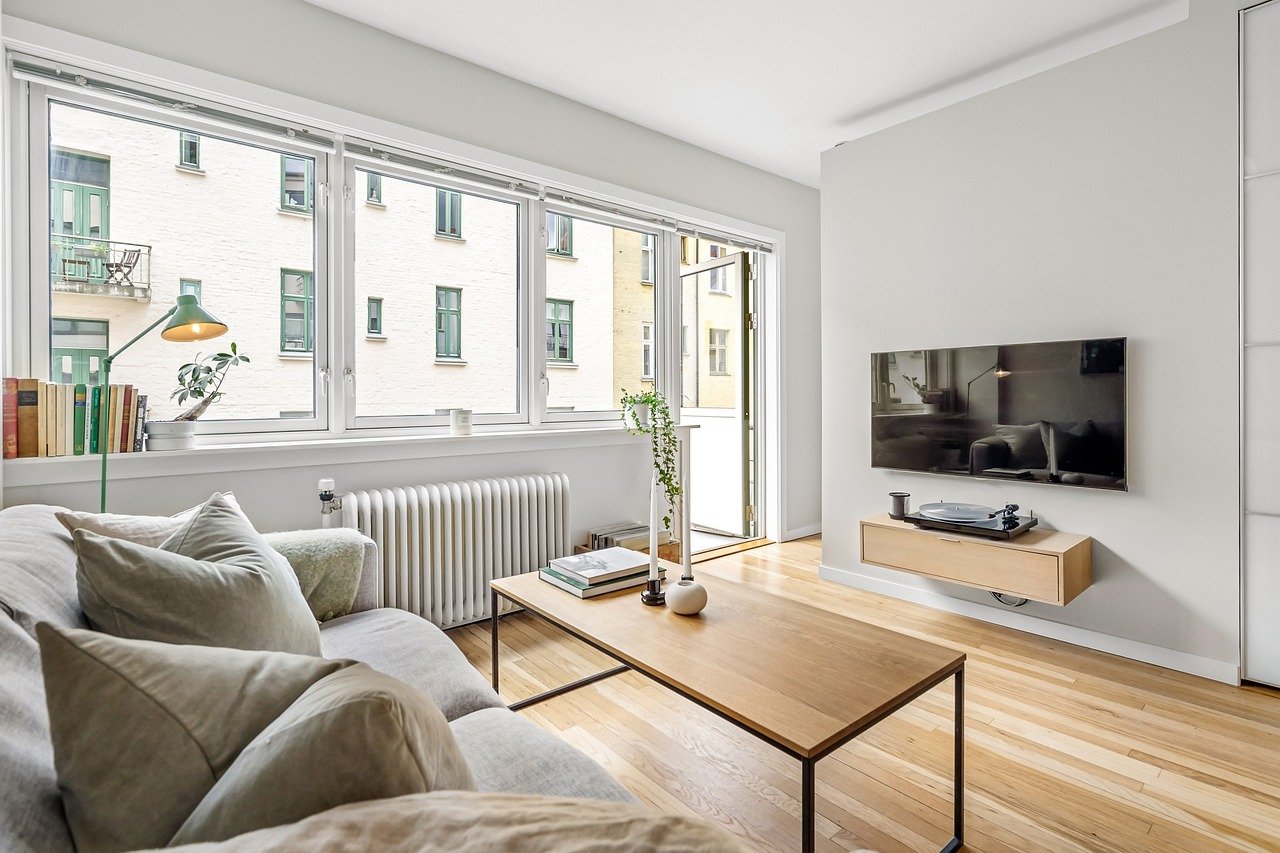
Soft Furnishings and Textiles
When it comes to decorating your child's room, play a vital role in creating a cozy and inviting atmosphere. However, safety should always be a top priority. Choosing the right materials can significantly reduce risks associated with choking hazards, allergies, and even fire safety. For instance, opting for flame-resistant fabrics for curtains and cushions is a smart move that ensures your child's room is not only comfortable but also secure.
When selecting rugs, look for options that are both non-toxic and hypoallergenic. Natural fibers like cotton or wool are often a great choice, as they are less likely to trigger allergies compared to synthetic materials. Plus, they add a warm, inviting feel to the space. You might also want to consider rugs with non-slip backing to prevent any slips or falls during playtime. After all, a soft landing is always better than a hard one!
As you think about curtains, remember to choose those that are free from long cords or strings, which can pose strangulation hazards. Instead, consider using cordless window treatments or those with safety features that keep your little one safe while still allowing you to control the light coming into the room. This way, you can create a bright, cheerful space without compromising on safety.
Additionally, when it comes to cushions and pillows, ensure they are made from materials that are washable and durable. Kids can be messy, and having easy-to-clean items will save you time and stress. Look for cushions that are firm enough to prevent suffocation risks, especially for younger children. Remember, the goal is to create a comfortable space where your child can relax, read, or play without any worries.
In summary, while soft furnishings and textiles can significantly enhance the look and feel of your child's room, paying attention to safety features is crucial. By selecting the right materials and designs, you can create a beautiful, inviting space that promotes comfort while keeping your child safe. So, get creative with colors and patterns, but always keep safety at the forefront of your decisions!
- What materials should I avoid when choosing soft furnishings for my child's room? It's best to avoid materials that are synthetic and treated with chemicals. Look for natural fibers and non-toxic options.
- How can I ensure my child's rugs are safe? Choose rugs with non-slip backing and opt for those made from hypoallergenic materials to minimize risks.
- Are there specific safety features I should look for in curtains? Yes! Look for cordless window treatments or those with safety features to prevent strangulation hazards.
- What is the best way to clean soft furnishings? Always opt for washable materials and follow the manufacturer's cleaning instructions to ensure longevity and hygiene.
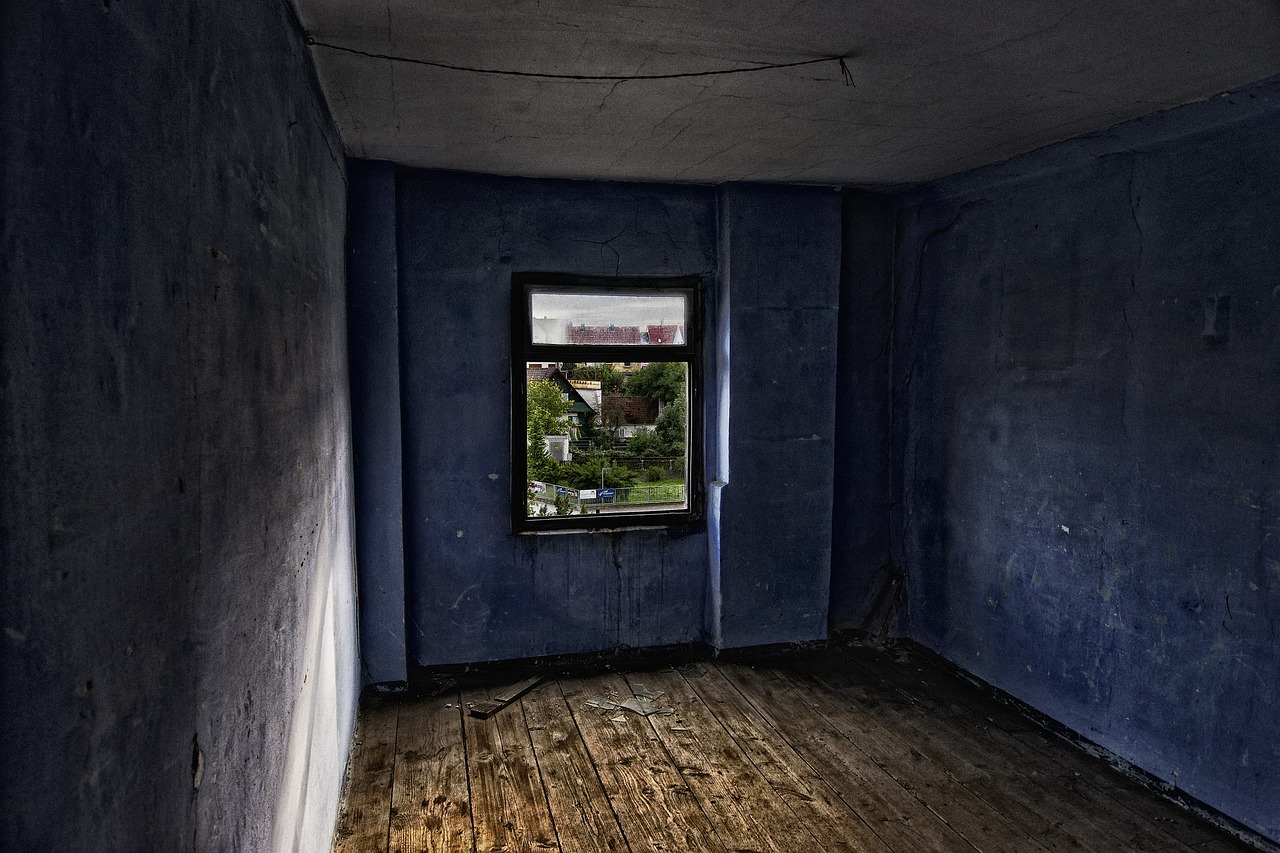
Lighting Considerations
When it comes to decorating your child's room, lighting plays a crucial role in creating a safe and inviting atmosphere. Not only does proper lighting enhance the aesthetic appeal of the space, but it also affects your child's mood and sense of security. Imagine walking into a room filled with soft, warm light that instantly makes you feel at home. That’s the kind of vibe you want to achieve! But how do you ensure that the lighting you choose is both functional and safe? Let's dive into some essential considerations.
First and foremost, consider using energy-efficient bulbs such as LED lights. These bulbs not only consume less energy, which is great for the environment and your wallet, but they also emit less heat compared to traditional incandescent bulbs. This means that the risk of burns or fire hazards is significantly reduced, making them a safer choice for your little ones. Plus, they come in various colors and brightness levels, allowing you to create the perfect ambiance for playtime or bedtime.
Another important aspect is the placement of light fixtures. Overhead lights are often a must, but think about incorporating task lighting as well. For example, a small desk lamp can provide focused light for homework or arts and crafts, while a soft bedside lamp can create a cozy environment for reading before bed. When selecting fixtures, ensure they are securely mounted and out of reach of small hands. You wouldn't want your child to accidentally pull down a lamp or reach for a light bulb that could be hot!
Now, let's talk about night lights. These little devices can provide comfort to a child who is afraid of the dark. However, safety is key! Look for night lights that are cool to the touch and free from sharp edges. Some models even come with built-in timers or light sensors, turning on automatically when it gets dark. This way, you can ensure your child has just the right amount of light without the risk of overheating or burns.
When it comes to window treatments, safety should be a top priority. Traditional blinds with long cords can pose a strangulation hazard for young children. Instead, consider options like cordless blinds or shades, which are much safer and still allow you to control the amount of light entering the room. Additionally, light-filtering curtains can provide privacy while letting in natural light during the day. This creates a bright and cheerful space that your child will love.
In summary, lighting is not just about illuminating a room; it's about creating a safe, functional, and inviting environment for your child. By choosing energy-efficient bulbs, ensuring proper fixture placement, selecting safe night lights, and opting for child-friendly window treatments, you can achieve a beautifully lit space that promotes both safety and comfort. Remember, the right lighting can transform a room from ordinary to extraordinary, making it a haven for your little one to grow, play, and dream.
- What type of light bulbs are safest for children's rooms? LED bulbs are recommended as they are energy-efficient, emit less heat, and are less likely to cause burns.
- How can I ensure my child's night light is safe? Look for night lights that are cool to the touch and do not have sharp edges or easily breakable parts.
- Are cordless window blinds really safer? Yes! Cordless blinds eliminate the strangulation hazard posed by traditional corded blinds, making them a safer choice for children's rooms.

Night Lights and Safety
When it comes to creating a cozy and safe environment for your child at bedtime, night lights play an essential role. They not only provide a gentle glow that helps ease nighttime fears but also serve a practical purpose by illuminating the room, making it easier for children to navigate their surroundings. However, choosing the right night light is crucial to ensure it doesn’t become a safety hazard. So, what should you look for?
First and foremost, consider the temperature of the light. Opt for LED night lights, as they are energy-efficient and remain cool to the touch, reducing the risk of burns. Traditional incandescent bulbs can get extremely hot, posing a danger if your child accidentally touches them. Additionally, many modern night lights come with features such as auto shut-off timers, which can help save energy and prevent the light from staying on all night unnecessarily.
Another important factor is the design of the night light. Look for options that are free from sharp edges and have a sturdy base to avoid tipping over. A night light that can be easily knocked down can lead to accidents, especially if your child is still adjusting to a new sleeping environment. Some night lights even come with built-in safety features, such as child-proof plugs or those that are designed to be mounted on the wall, keeping them out of reach from curious little hands.
Moreover, consider the brightness of the night light. It should provide enough illumination to comfort your child without being too bright, as this can disrupt their sleep cycle. A dim, warm light is often the best choice, as it mimics the natural light of dusk, signaling to your child that it’s time to wind down. Some night lights even offer adjustable brightness settings, allowing you to customize the glow according to your child’s preferences.
Lastly, don’t forget about the power source. Battery-operated night lights can be a great option as they eliminate the need for cords, which can be a tripping hazard. However, make sure to choose models that are easy to replace and maintain. If you prefer plug-in options, ensure that the cords are safely secured and out of reach, preventing any potential strangulation risks.
In summary, when selecting a night light for your child’s room, keep these safety tips in mind:
- Choose LED lights that remain cool to the touch.
- Opt for designs with no sharp edges and a stable base.
- Look for adjustable brightness settings to suit your child's needs.
- Consider battery-operated options to eliminate cord hazards.
By taking the time to choose the right night light, you can create a peaceful sleep environment that promotes comfort and safety for your little one. Remember, a well-lit room can help ease those nighttime fears, allowing your child to drift off into a restful sleep without worry.
Now that we've covered the importance of night lights for safety, let’s move on to some common questions parents may have about this topic.
Q: Are night lights safe for infants?
A: Yes, night lights are generally safe for infants as long as they are designed with safety features such as cool-to-the-touch bulbs and stable bases. Always supervise infants around lighting fixtures.
Q: How bright should a night light be?
A: The ideal brightness for a night light is soft and dim, allowing for enough visibility without disrupting sleep. Look for lights with adjustable brightness settings for the best results.
Q: Can night lights help with sleep training?
A: Yes! A soft night light can create a calming atmosphere that helps children feel secure, which can be beneficial during sleep training.
Q: What type of night light is best for toddlers?
A: For toddlers, consider night lights that are easy to operate, such as those with touch controls, and ensure they are durable and safe for curious hands.

Window Treatments
Choosing the right for your child's room is not just about aesthetics; it's a crucial aspect of ensuring their safety. Many parents overlook the potential hazards that traditional blinds and curtains can pose. For instance, cords can be a strangulation risk, and heavy drapes can fall unexpectedly, posing a danger to curious little ones. Instead, consider opting for cordless blinds or shades that provide a clean, safe environment while still allowing you to control light levels effectively.
When selecting window treatments, think about the materials as well. Look for options that are flame-resistant and made from non-toxic materials. This is particularly important in a child's room where safety is paramount. Additionally, consider the color and pattern of the treatments. Light colors can help reflect sunlight, keeping the room cooler, while fun patterns can stimulate your child's imagination. For example, whimsical designs featuring animals or stars can make the room feel more inviting.
Another essential factor is the ease of use. As children grow, they become more independent and want to control their environment. Choose treatments that are easy for them to operate, fostering a sense of autonomy without compromising safety. For instance, roller shades with a simple pull mechanism or blackout curtains that can be easily drawn back can give your child the ability to manage their light exposure, which is especially helpful during nap times.
Here's a quick comparison of some popular window treatment options:
| Type | Safety Features | Light Control | Style |
|---|---|---|---|
| Cordless Blinds | Eliminates strangulation risks | Good | Modern |
| Blackout Curtains | Flame-resistant options available | Excellent | Variety of styles |
| Sheer Drapes | Lightweight, but monitor for falls | Moderate | Elegant |
| Roller Shades | Available in cordless options | Good | Sleek |
Incorporating safe window treatments not only enhances the room's design but also contributes to a peaceful and secure environment for your child. Remember, it's all about balancing functionality with safety. So, as you embark on decorating your child's space, let their safety be your guiding star!
- What are the safest window treatment options for children's rooms? Cordless blinds, blackout curtains, and roller shades are excellent choices as they eliminate strangulation risks and are easy to operate.
- How do I maintain the safety of window treatments? Regularly check for any frayed cords or loose fixtures, and ensure that all window treatments are securely installed.
- Can I use decorative curtains in my child's room? Yes, but make sure they are flame-resistant and consider using tie-backs that are out of reach of small hands.
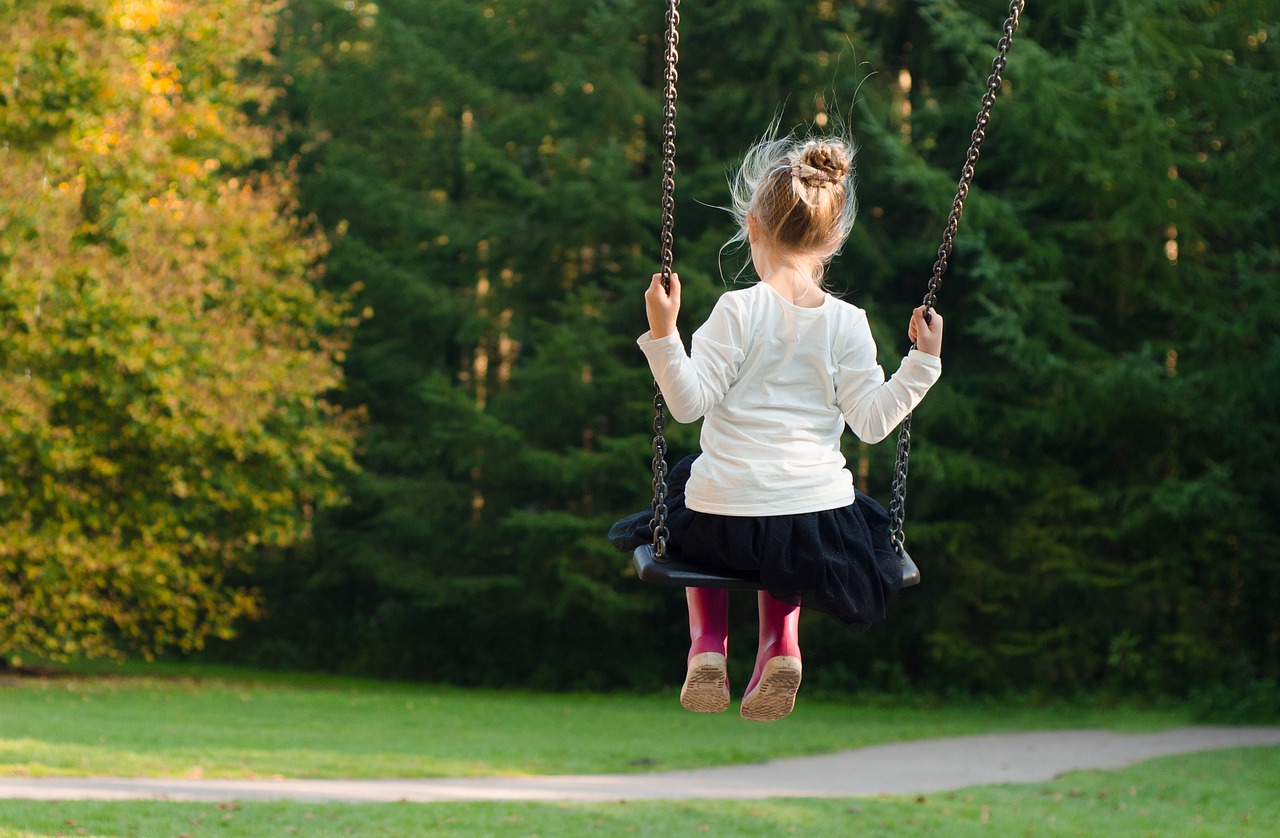
Creating a Safe Play Area
Creating a safe play area for your child is not just a matter of aesthetics; it’s about nurturing their growth while ensuring their safety. When you design a play space, think of it as a canvas where creativity, fun, and safety collide. Imagine a vibrant world filled with colors, textures, and endless possibilities, but with a solid foundation that protects your little one as they explore. So, how do you craft this magical yet secure environment? Let’s dive into some essential components!
First and foremost, consider the flooring. The right flooring can be a game-changer in preventing slips and falls, which are all too common in play areas. Soft, cushioned materials like foam tiles or carpet can provide a safe landing for your child as they tumble and play. Not only do these options enhance safety, but they also add a cozy touch to the room. If you’re looking for a more permanent solution, consider installing rubber flooring, which is both durable and easy to clean. Here’s a quick comparison of some popular flooring options:
| Flooring Type | Safety Features | Maintenance |
|---|---|---|
| Foam Tiles | Soft, cushioned surface | Easy to clean, replaceable |
| Carpet | Soft landing, warmth | Requires regular vacuuming |
| Rubber Flooring | Durable, slip-resistant | Easy to clean, water-resistant |
Next up, let’s talk about storage solutions. A cluttered play area can lead to accidents, so keeping toys organized is crucial. Invest in storage bins that are easy for your child to access, yet sturdy enough to withstand some rough handling. Opt for bins with rounded edges and avoid those with small parts that could pose choking hazards. You might also consider labeling the bins with pictures or words, making it easier for your child to learn organization skills while keeping their space tidy. Remember, a clean play area is a safe play area!
Moreover, think about incorporating soft furnishings that enhance comfort without compromising safety. Cushions and bean bags are fantastic additions to a play area, providing cozy spots for your child to relax after a busy play session. Just ensure that these items are made from flame-resistant materials and are free from any small parts that could pose a choking risk. When it comes to curtains, choose options that are free from cords or loops that could create strangulation hazards. Safety doesn’t mean sacrificing style; there are plenty of chic options available!
Lastly, consider the layout of the play area. Arrange furniture in a way that allows for open space where your child can move freely. Avoid placing heavy items on high shelves where they could fall and injure someone. Instead, use wall-mounted solutions for books and toys, ensuring they are securely anchored to the wall. This not only saves floor space but also keeps items out of reach, promoting safety while encouraging independence. Think of it like creating a mini adventure park where every corner is designed for exploration, yet every element is carefully considered for safety.
In summary, a safe play area is all about thoughtful design and practical choices. By focusing on flooring, storage, furnishings, and layout, you can create a vibrant, engaging space that supports your child's development while keeping them safe. Remember, the goal is to foster a sense of wonder and creativity, all while ensuring that safety is never compromised. So, roll up your sleeves and start crafting that dream play area!
- What type of flooring is best for a child's play area? Soft flooring options like foam tiles or carpet are ideal as they provide cushioning and reduce the risk of injury.
- How can I keep toys organized safely? Use sturdy storage bins with rounded edges and label them for easy access, ensuring that they are safe for your child to use.
- Are there specific materials to avoid when decorating? Yes, avoid materials that contain toxic substances or small parts that could pose choking hazards.

Flooring Options
When it comes to creating a safe play area for your child, choosing the right flooring is absolutely essential. Think of flooring as the foundation of a safe haven where your little one can explore, play, and grow without the constant worry of slips and falls. Imagine your child running around, giggling, and tumbling without a care in the world—this is what the right flooring can provide! So, let’s dive into some options that not only look great but also keep safety at the forefront.
First up, we have carpet tiles. These are a fantastic choice because they offer a cushioned surface that can absorb impacts from falls, making them a safe option for active kids. Plus, they come in a variety of colors and patterns, allowing you to create a fun and vibrant atmosphere in the room. If one tile gets stained or damaged, you can easily replace it without having to redo the entire floor!
Another excellent option is vinyl flooring. This material is not only durable and easy to clean, but it also provides a softer surface compared to traditional hardwood. Many vinyl flooring options come with a cushioned backing, which adds an extra layer of safety. Additionally, vinyl is often available in a wide range of designs, mimicking the look of wood or stone, so you don’t have to sacrifice style for safety.
For those looking for something more natural, rubber flooring is an outstanding choice. It’s commonly used in playgrounds for its shock-absorbing qualities, which makes it perfect for a child’s room as well. Rubber flooring is resistant to mold and mildew, making it a healthy choice for your child's environment. Plus, it’s easy to install and comes in various colors and textures, allowing you to customize the look of the space.
When considering flooring, it’s also important to think about maintenance. Some materials require more upkeep than others. For instance, while hardwood floors are beautiful, they can be slippery and might require regular polishing to maintain their shine. On the other hand, carpets can trap dust and allergens, so opting for low-pile carpets or those with hypoallergenic properties can be beneficial.
Here’s a quick comparison table to help you weigh the pros and cons of different flooring options:
| Flooring Type | Safety Features | Maintenance | Style Options |
|---|---|---|---|
| Carpet Tiles | Cushioned, slip-resistant | Easy to replace, vacuum regularly | Variety of colors and patterns |
| Vinyl Flooring | Soft, water-resistant | Wipe clean, durable | Looks like wood or stone |
| Rubber Flooring | Shock-absorbing, non-slip | Easy to clean, durable | Available in various colors |
In summary, the right flooring can transform your child’s room into a safe and inviting space. Remember to consider your child's activities and the overall design of the room when making your choice. After all, you want a floor that can handle the joyful chaos of childhood while still looking fabulous!
- What is the best flooring option for a playroom? Rubber flooring is often recommended for playrooms due to its safety features and durability.
- Are carpet tiles safe for children? Yes, carpet tiles provide a cushioned surface that can help prevent injuries from falls.
- How do I maintain vinyl flooring? Vinyl flooring is easy to maintain; simply wipe it clean with a damp cloth and use a mild cleaner for tough stains.
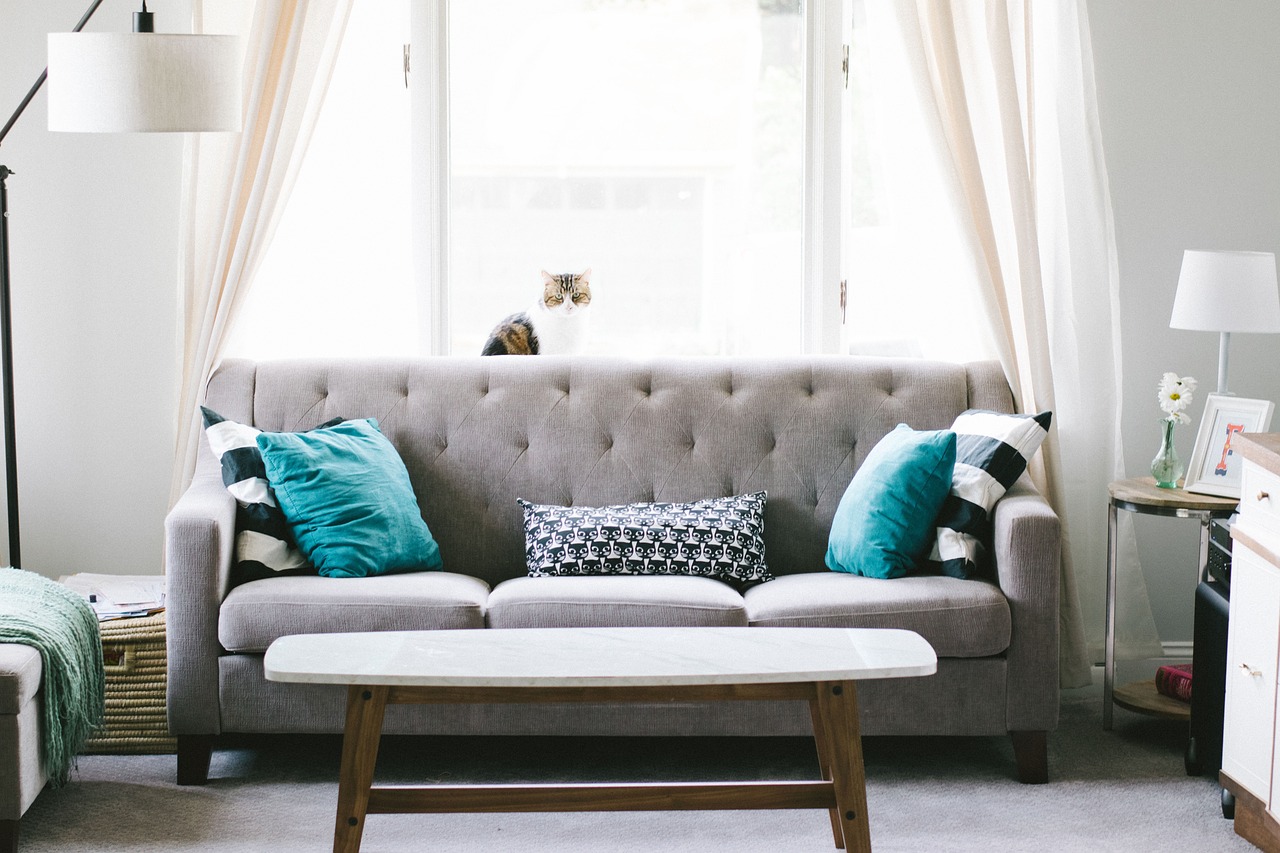
Storage Solutions
Creating a safe and organized play area for your child is essential, and one of the most effective ways to achieve this is through smart storage solutions. Imagine a room where toys are neatly tucked away, and clutter is kept at bay, allowing your little one to explore their creativity without the risk of tripping over a scattered pile of blocks. The key is to choose storage options that are not only functional but also safe and accessible for your child.
When selecting storage solutions, consider using bins and baskets that are lightweight and easy for your child to handle. Look for options made from non-toxic materials, ensuring that they are safe for little hands. Avoid bins with sharp edges or small parts that could pose a choking hazard. For instance, fabric bins are a great choice as they are soft, lightweight, and can be easily moved around. Additionally, they come in various colors and patterns, making them visually appealing and fun for your child's room.
Another fantastic solution is to incorporate open shelving. This not only provides a place for toys and books but also encourages your child to take responsibility for their belongings. By having a designated spot for each item, your child can learn to clean up after themselves, fostering a sense of independence. However, it's crucial to ensure that the shelves are anchored securely to the wall to prevent tipping. You can also opt for shelves that are low enough for your child to reach, making it easy for them to access their favorite toys without needing assistance.
Consider utilizing multi-functional furniture as well. For example, a bench with storage underneath can serve as both seating and a place to stash toys. This not only saves space but also keeps everything tidy. Additionally, you could look for ottomans that open up to reveal hidden storage. This way, you can maintain a clean aesthetic while providing a practical solution for toy storage.
Don't forget about the importance of labeling. Teaching your child to recognize where things belong can be a fun and educational experience. Use colorful labels or pictures on bins to help them identify where to put their toys. This not only makes clean-up easier but also adds an element of fun to the organization process. It’s like turning tidying up into a game!
In summary, effective storage solutions are vital for maintaining a safe and organized play area for your child. By choosing lightweight bins, open shelving, multi-functional furniture, and incorporating labeling, you can create a space that is not only functional but also encourages your child's independence and creativity. Remember, a well-organized room is a happy room!
- What are the safest materials for children's storage solutions? Look for non-toxic, hypoallergenic materials such as fabric or wood that are free from sharp edges.
- How can I teach my child to organize their toys? Use colorful labels and involve them in the process by making it a fun game.
- Are open shelves safe for young children? Yes, as long as they are securely anchored to the wall and within reach of your child.
- What should I avoid when choosing storage solutions? Avoid bins with small parts, sharp edges, or heavy materials that could cause injury.
Frequently Asked Questions
- What materials should I choose for my child's room?
When decorating your child's room, it's essential to opt for non-toxic and hypoallergenic materials. Look for paints that are labeled as low-VOC (volatile organic compounds) and choose bedding made from organic cotton. This ensures a healthier environment free from harmful chemicals that could affect your child's health.
- How can I ensure the furniture in my child's room is safe?
Prioritize furniture with rounded edges and sturdy construction. Make sure that any large items, like dressers or bookshelves, are anchored to the wall to prevent tipping. Additionally, always check that the furniture is age-appropriate, ensuring it fits your child's size and developmental stage.
- Are night lights safe for my child's room?
Yes, night lights can be a great addition to your child's room, providing comfort during bedtime. However, it's crucial to choose options that are cool to the touch and have no sharp edges. Look for LED night lights that are energy-efficient and won't overheat.
- What should I consider when choosing window treatments?
When selecting window treatments, safety is key. Avoid cords that can pose strangulation hazards. Instead, opt for cordless blinds or shades that provide adequate light control and privacy while keeping your child safe. Consider also using sheer curtains that allow natural light in without compromising safety.
- How can I create a safe play area for my child?
Designing a safe play area involves choosing the right flooring, like foam tiles or carpets that cushion falls. Ensure that toys are stored in accessible but safe places to prevent tripping hazards. Create zones for different activities to encourage creativity while keeping safety in mind.
- What type of flooring is best for a child's play area?
Soft flooring options, such as rubber mats, carpet tiles, or foam padding, are ideal for play areas. These materials provide cushioning, which reduces the risk of slips and falls, making playtime safer and more enjoyable for your child.
- How can I keep my child's room organized and safe?
Effective storage solutions are vital for keeping a child's room organized. Use bins or baskets that are easy for your child to access, but ensure they are lightweight to avoid injury. Label containers to help your child learn where to put their toys away, promoting both safety and responsibility.










